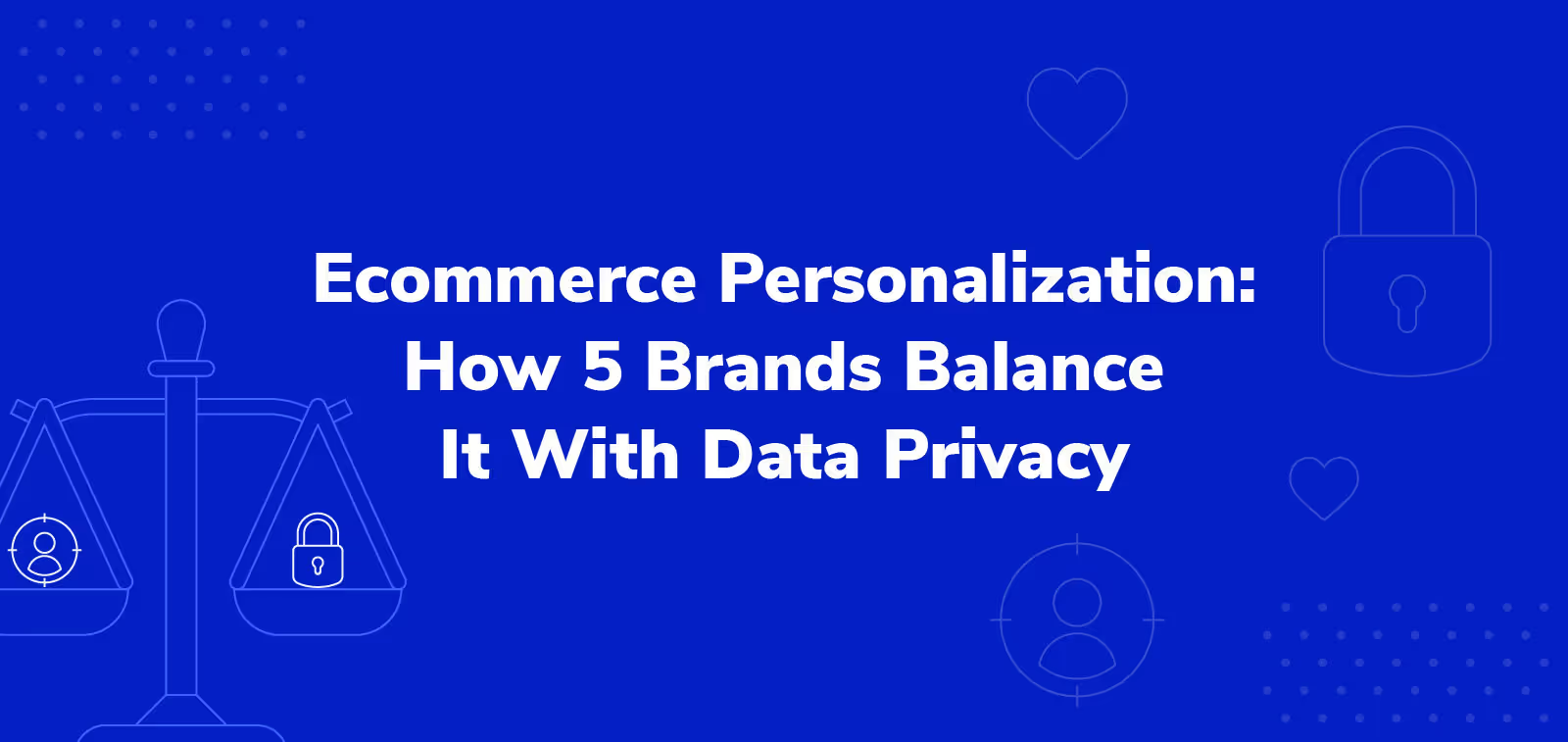8 Top eCommerce Metrics Merchants Need to Know — and How to Calculate Them

High ecommerce metrics aren’t always good. Sometimes, you want to see a lower number — even for metrics other D2C businesses want to increase.
Ecommerce metrics aren’t like dollars in your bank account, where a higher balance is assumed to be healthier. They’re more like dials in an airplane cockpit: a higher altitude isn’t always best because staying high makes landing difficult. Instead, the pilot aims to keep altitude within a range ideal for their flight path. Their skill lies in understanding what the dials mean and deciding what to do next based on what the various instruments tell them.
Similarly, it’s a skill to use ecommerce metrics properly. Is $30 a good average order value for your business? Should you be satisfied with a 15% email opt-in rate, or should you invest more to drive it higher? Interpretation is key. And just as the pilot has their flight plan, you have your business plan.
The metrics you must track are determined by your business plan
Your business plan tells you where you want to go and how to get there. You may have other documents you refer to directly — like your marketing strategy. But your final benchmark for deciding if any business decision is right or wrong should be the company business plan. Anything that contradicts it is taking you in the wrong direction.
Your business plan might tell you to target people making $25,000 to $35,000 per year in rural Kansas. It also specifies that these customers should buy your main product roughly four times per year. That product retails at $40. The business plan states that this is your path to success.
Based on this business plan, your average order value (AOV) should be $40. But what if it’s $80? There must be a reason customers are buying multiple products per transaction. You might have misunderstood your customers’ needs. This issue could impact the business.
Financial planning is harder if customer purchasing habits are unexpectedly seasonal. The result could be cash-flow issues. You might have seen AOV rising in January and thought demand for your products was increasing. But now, customers aren’t buying in September because they picked up their supplies for the year in January. Because you expected the same rate of buying to continue, you didn’t plan for a lean season.
To avoid getting caught out, use a carefully chosen group of metrics to see if reality matches your business plan rather than assuming that higher is always better.
1. Average order value (AOV)
Average order value (AOV) is an indicator of how much customers spend on a typical order over a given time period.
If your AOV isn’t high enough, you won’t turn a profit. A higher AOV can mean a higher profit margin. AOV also gives you an extra way to test your assumptions about how your customers see you as a source of value.
For example, you may operate your business on the belief that your AOV is $800, driven primarily by sales of higher-priced items. But if your true AOV is determined by sales of your more popular lower-priced items, it may be only $15 — meaning your business strategy doesn’t fit your actual needs. You should either change your business plan to match how the market sees you or change your business practices to fit your business plan (like adjusting your marketing strategy to attract shoppers with higher budgets).
Higher AOV can be a good sign because consolidating multiple orders into a single order reduces overhead. Shipping multiple items together is cheaper, and fewer transactions result in reduced card processing fees.
A high AOV can also be a good target for companies whose shoppers buy less frequently. If shoppers only visit your website occasionally, it makes sense to sell more while you can. For example, Z Gallerie sells furniture and décor, but because consumers don't regularly need new furniture, Z Gallerie upsells and cross-sells to make the most of each opportunity. They offer product protection plans from Extend that both increase AOV and give the customer peace of mind.

To calculate AOV, add the value of all orders for the time period of interest together, then divide by the number of orders.
- AOV = Total Revenue / Total Number of Orders
Here’s an AOV calculation in practice: you want to know your AOV for July on furniture sales. You add together the value of all orders for the month, giving you $135,000. You had 90 total orders in July, so you divide 135,000 by 90, giving you an AOV of $1,500.
2. Customer lifetime value (aka CLTV, LTV, or CLV)
Customer lifetime value tells you how much an average customer would spend with your business across all of their transactions.
As the metric is an average, a growing CLTV reveals a trend toward customers spending more during their time shopping with your company. A falling CLTV means your average customer spends less, which represents a double hit to profits. Less revenue per customer leads to a greater need to find more customers to make up the shortfall. In turn, that need for more customers results in increased spending on sales and marketing.
CLTV is particularly great to optimize if high AOV isn’t your aim. TYME sells hair care tools and products like straighteners, brushes, and shampoos. It’s unlikely TYME would be able to sell every haircare product a customer would ever need in a single transaction. If you split a customer’s lifetime orders among multiple transactions, you lower AOV. But TYME has little choice. Customers aren’t going to pre-buy every haircare product they’ll ever need in advance. However, each customer can contribute to higher CLTV with multiple purchases across their lifespan, for example, by buying a straightener now, a brush later, and regular replenishments of shampoo.
To calculate CLTV, you’ll first multiply your average order value by the average number of purchases per customer. This gives you your customer value, which you’ll multiply by your average customer lifespan (ACL). Your ACL is simply the average time between all your customers’ first and most recent purchases.
Value of each customer (Average Order Value x
Average No. of Purchases per Customer) x Average Customer Lifespan (ACL).
Say your average purchase value is $30. You multiply that by your average number of purchases per customer — five — to get a customer value of $150. You’ve calculated that your ACL is two years, so you multiply $150 by two for a CLTV of $300.
3. Customer retention rate (CRR)
Customer retention rate (CRR) is a metric for how many customers you keep over time as a proportion of your total customers.
It’s usually more expensive to find new customers than to hold onto the ones you have. Not least, because securing a new customer and moving them down the funnel can include marketing costs like ad spend and influencer sponsorships. Existing customers have already moved down the funnel, and sticking with your brand may be the easy choice if you don’t give them a reason to move on.
Better yet, a healthy CRR has a positive impact on other important metrics like CLTV. You can’t have a high CLTV if customers don’t stick around.
Say a furniture company has a CRR of 90%. That’s highly advantageous because for every 10 customers they bring in, nine don’t churn. As a result, the company continues to benefit from the majority of their past investments in customer acquisition.
To calculate CRR, first deduct the number of new customers gained during your period of interest from the number of customers at the end of the period. Then, divide that figure by the total customers you had at the start of the period before multiplying the result by 100.
(Number of customers at end of period - new customers gained during period)
/ customers at start of period x 100.
Say you had 18,000 customers by the end of Q2. To calculate CRR, you’d subtract the new customers from the quarter — 2,000 — from that total because you’re only interested in the portion of customers you kept. That gives you 16,000 non-new customers in Q2. You had 17,000 customers at the start of the quarter, so you divide 16,000 by 17,000. That gets you to around 0.941, which you multiply by 100 and express as a percentage for a CRR of 94.1%.
4. Customer satisfaction score (CSAT)
Your customer satisfaction score (CSAT) measures how happy a customer is with your product or service. You can track changes in your average CSAT score over time.
If customers are unsatisfied, they won’t stick around or recommend you. That means higher churn and cost of acquisition. You’ll also face more returns, refunds, and exchanges, denting profits. If you’re not satisfying your customers, you won’t be in business for long.
Suppose athletic recovery system merchant Air Relax wants to invest in developing a new product. The company needs to know which of their existing product lines to base it on. Should they develop more full leg sleeves or shorts? Customers’ satisfaction with previous products can be one factor in helping the company decide. Air Relax can send customer satisfaction surveys to customers who’ve bought each type and compare the results.
First, you send your survey. In a CSAT survey, your customers will usually be offered a choice of satisfaction levels on a scale of 1 to 5, with 1 representing least satisfied and 5 being most satisfied. Once you have all your results, you have two ways to calculate CSAT. The first is a composite score — which is the average of your survey responses. The second is a detailed satisfaction score, which gives your share of “happy” customers. Happy customers answer 4 or 5. Your CSAT is the number of responses who answered 4 or 5 divided by the number of responses and multiplied by 100.
CSAT = # of 4 & 5s / Total Responses X 100
Assume you had 350 total responses, of which 300 were either 4s or 5s. You divide 300 by 350 and get around 0.857. You multiply that figure by 100 to find your CSAT score of 85.7%.
5. Email opt-in rate
Your email opt-in rate is the proportion of store visitors who agree to get marketing emails from your business.
Email opt-ins offer another clue as to how well you’re connecting with your target audience. People who don’t buy on their first visit don’t necessarily dislike what they see. Changes in your opt-in rate help you gauge shopper approval beyond purchasers. As most ecommerce businesses collect emails for remarketing, there’s usually little extra effort required to make use of this existing data.
Say you’re browsing for both a wedding and an engagement ring online. You view a few products on Silpada.com and leave. The merchant can’t know if you’re still interested. But if you sign up for their email list, you signal your interest. In addition to signaling interest, the company can now reach out again to sell in the future.

To calculate your email opt-in rate, divide your total email opt-ins for the period you’re interested in — like months or years — by the total number of visitors (not visits). You then multiply that figure by 100 and express the result as a percentage.
Email opt-in rate = total email opt-ins / by # visitors x 100
Say you want to know your email opt-in rate for August. You had 6,000 visitors to your online store. Of those, 500 opted to receive emails. You divide 500 by 6,000 to get roughly 0.083. You multiply that by 100 to find your email opt-in rate of 8.33%.
6. Monthly recurring revenue (MRR)
Monthly recurring revenue (MRR) is the dollar value a company receives consistently from one month to the next.
MRR isn’t just for subscription-only ecommerce businesses. It can also be useful if you sell via subscriptions and individual transactions. Businesses can view MRR as a baseline of stable revenue that they can build on. Building your revenue on the back of a stable MRR can make forecasting easier, too, as customers tend to cancel and renew subscriptions at predictable rates.
To calculate your MRR, multiply your total monthly subscribers by the average revenue per user (ARPU) your business receives from subscriptions.
# monthly subscribers x ARPU from subscriptions
Suppose you have 18,000 monthly subscribers and an ARPU of $50. You multiply 18,000 by 50 for an MRR of $900,000.
7. Net Promoter Score (NPS)
Your Net Promoter Score (NPS) indicates how willing customers are to recommend your company, services, and products based on survey data.
NPS differs from other post-purchase survey-based customer satisfaction metrics like CSAT because it highlights your potential for growth. Customers are asked how likely they are to recommend you to people they know — NPS is about the possibility of a further action the merchant benefits from, not past activity like how happy they were with a product they purchased.
As shoppers tend to trust recommendations, a high NPS score can be valuable. This is particularly true for high-value products where consumers are extra cautious with their hard-earned money. For example, Blackstone shoppers who’ve enjoyed their 36-inch patio grill may recommend it to others who are unsure which grill to buy in a crowded market.
First, send a survey to customers asking how likely they are to recommend your business on a 1-10 scale, with 10 being most likely. When you get the answers back, it’s time to calculate your NPS. Subtract the percentage of detractors — who gave a score of 0 to 6 — from the percentage of promoters (9 to 10). Respondents answering 7 to 8 are considered neutral.
% of promoters (9 to 10) - % of detractors (score = 0 to 6)
Say 65% of respondents gave a score of 9 or 10. Those are your promoters. The rest — 35% — gave scores ranging from 0 to 6. You deduct 35% from 65% to get an NPS of 30%.
8. Sales conversion rate (SCR)
Your sales conversion rate (SCR) measures the proportion of store visitors who buy — which the metric defines as a conversion.
SCR is among the most important stats in eCommerce since a store that doesn’t convert customers can’t generate revenue. Inversely, a high conversion rate results in more revenue.
Acceptable conversion rates vary by industry. Generally, 1 to 4% is normal. Higher-value products often have lower conversion rates. For example, eCommerce businesses in the automotive industry usually see lower conversion rates. On the other hand, products at lower prices can be higher converting — particularly candidates for impulse buys.
To calculate your SCR, divide your total number of purchasers by your total visitor count. Then multiply that figure by 100 and express it as a percentage.
total purchasers / total visitors x 100
Last month, you had 100,000 visitors to your site. 10,000 made a purchase. You divide 10,000 by 100,000 and get 0.1. You multiply 0.1 by 100 and express it as a percentage for an SCR or 10%.
Ecommerce tips to boost multiple metrics
Some business practices can support multiple metrics, for example, taking steps to develop deeper relationships with customers and offer them a better experience should reduce churn, boost CRR, and support CLTV.
To improve multiple metrics, you can:
- Incorporate customer feedback into product development. Use post-purchase surveys and focus groups to gather input on what real customers did and didn’t like about using the product. Feed that information to your design and product development teams.
- Build the quality of your post-purchase experience. Introduce a modern product protection plan that surprises customers with the speed of your claims approvals (Extend processes most claims in under 90 seconds).
To get started with modern product protection, book a demo now.
Aaron Sullivan is senior content marketing manager at Extend. He specializes in writing about e-commerce, finance, entertainment, and beer.
.svg)












































.avif)











